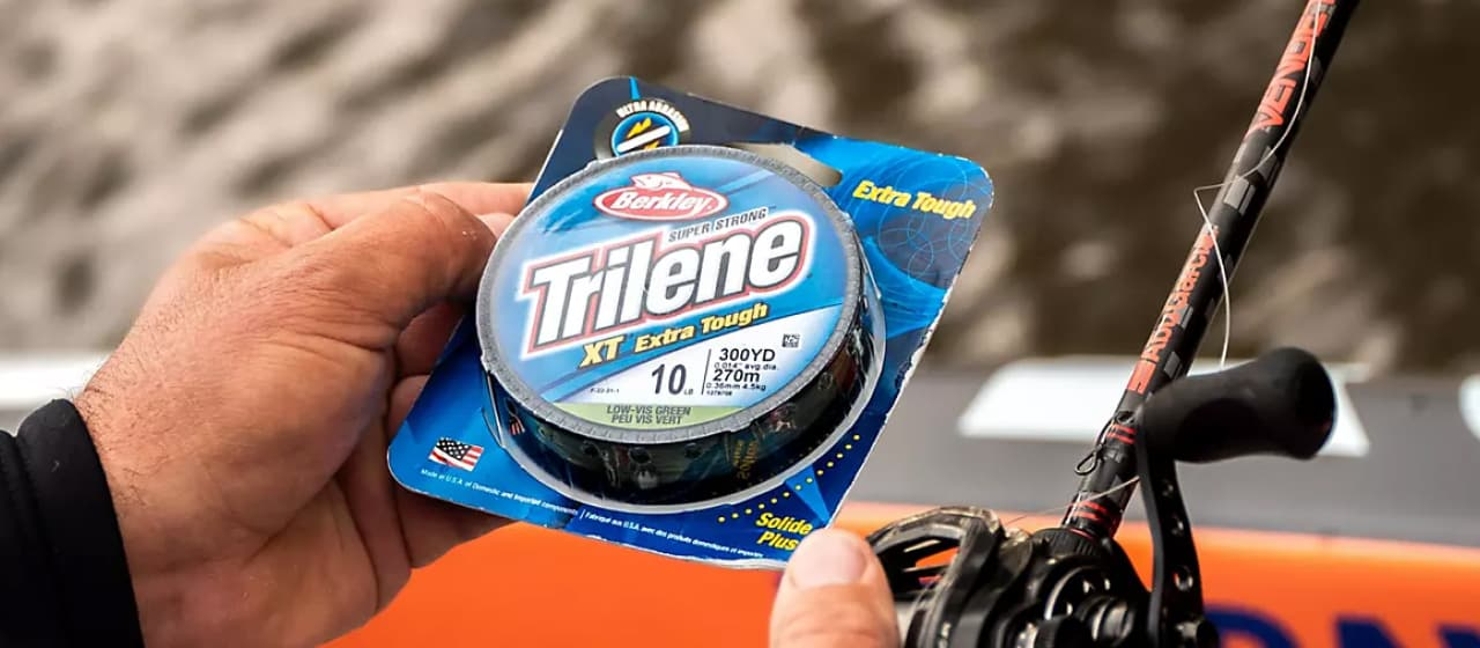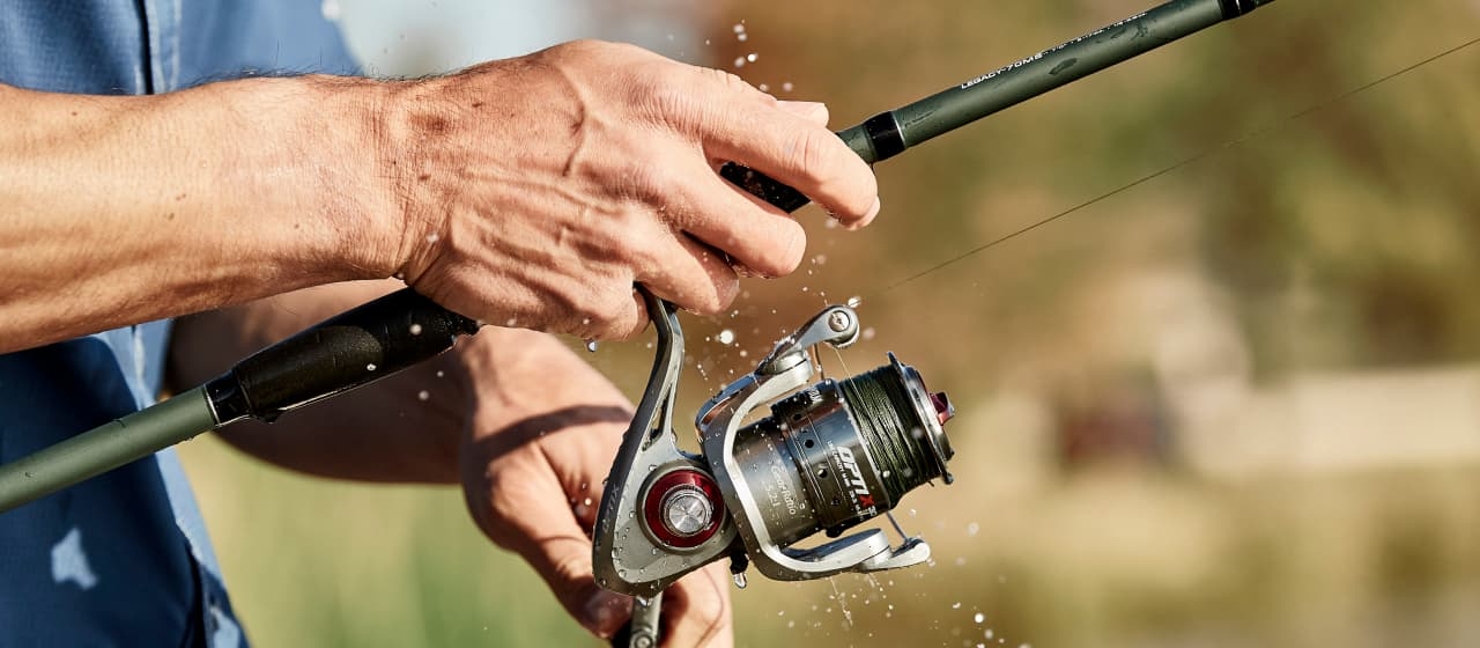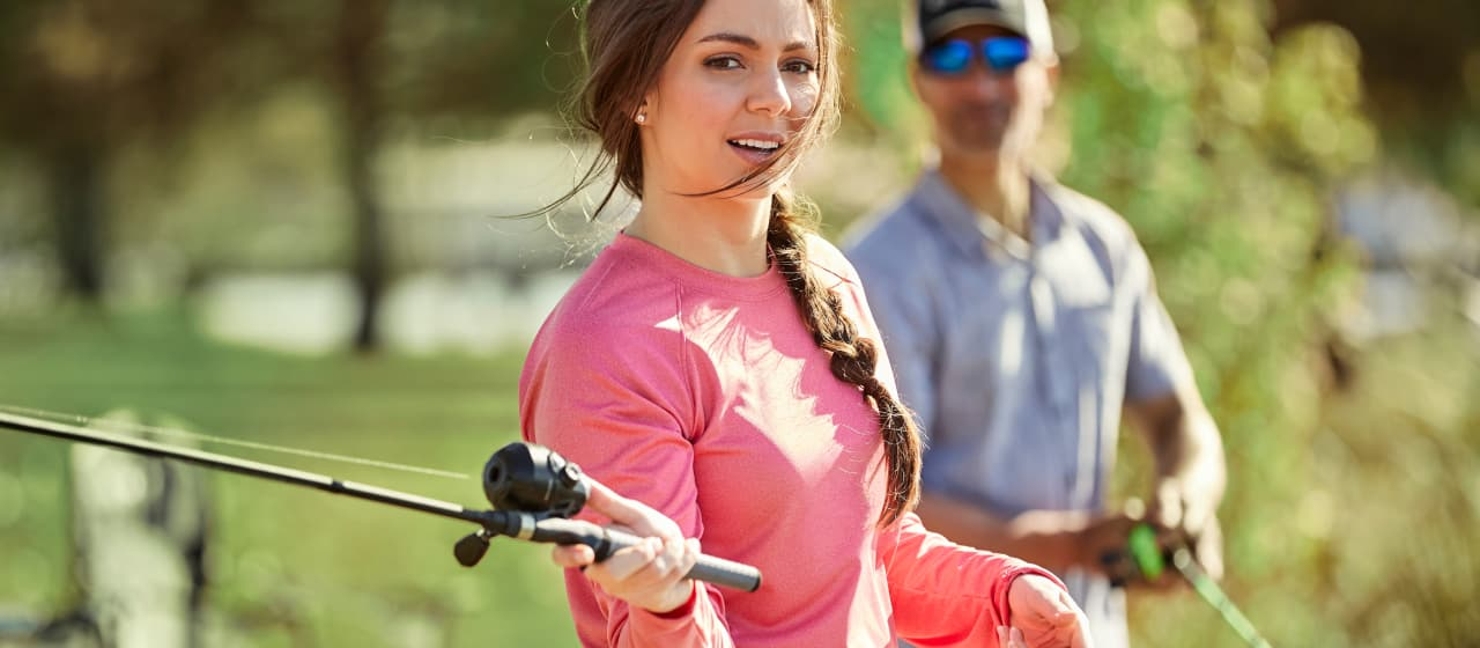Fishing Line Types Guide: How To Choose, Pros & Cons
Choosing the Right Fishing Line
Knowing the different types of fishing lines and their advantages can make the difference between a perpetual novice and a budding angler pro! In this guide, we’ve compiled everything you should know about the various fishing lines. Read on to make sure you have the right ones for your next trip.
Types of Fishing Line
Traditionally, you’ll hear about four main types: monofilament, braided, fly, and fluorocarbon lines. But in recent years, we’ve seen a good shift toward a newer type of fishing line: copolymer!
| Fishing Line Types Chart | |||||
|---|---|---|---|---|---|
Name |
Strength |
Durability |
Water Clarity |
Skill Level |
|
| Monofilament Line | Offers high shock strength but with less precision | Plenty of stretch; however, it’s weaker than other types of line | Clear water | Beginner+ | |
| Braided Line | Lower shock strength but has greater precision | Strongest line pound for pound | Low-visibility water, since it blends in well with dark bottoms | Intermediate | |
| Fluorocarbon Line | Stretches only with a lot of pressure | Abrasion-resistant and longer lasting than other types of line | Clear water because it’s nearly invisible in water | Intermediate | |
| Copolymer Line | Has lower stretch while it maintains its shock strength | Stronger and more abrasion-resistant than monofilament | Murky water because copolymer line is often made in bright colors that can be seen through clear water | Beginner+ | |
| Fly Line | Usually has about a 30-pound breaking strength core | Can last a few seasons, but it will wear out more quickly if stored in sunny areas | Can be used in clear and murky waters | Advanced | |
Monofilament Line

Constructed of a single strand of nylon material, monofilament line (often shortened to ‘mono line’) is a thin and durable type of line. It’s an ideal choice for beginner anglers and most other fishing conditions.
-
Available in a wide range of dependable and inexpensive options
-
Suitable for both novices and old pros alike
-
Best for spinning and baitcast reels
-
Abrasion-resistant so you don't have to worry about it snapping mid-cast
Expert Tip:
Did you know that monofilament fishing line is the most well-known and most used amongst anglers?
Advantages of Using Monofilament Line ✓
-
Easy to maneuver and works well for many fishing situations and angler levels
-
Greater stretch offers more forgiveness when reeling fish in
-
Inexpensive and the easiest on your wallet
-
Good knot strength
-
Floats for topwater fishing
Considerations for Using Monofilament Line ×
-
Slow sinking rate means it won’t get as deep as other lines, like copolymer
-
Exposure to sunlight can cause weakening of the line
-
Absorbs water so properties change when wet
-
Can start conforming to your reel when continually used, potentially causing tangles, breakage, and other issues
When To Use Monofilament Line
This line is thin enough that it won’t create drag in the water as you cast. However, it’s also strong enough to handle large catches. Use a mono line for topwater bass fishing and bait fishing. It’s perfect for freshwater species like trout and catfish. It’s a solid choice when you require a lot of abrasion resistance, stretch, or elasticity to reel in your fish.
Braided Line

Braided line is made of multiple fibers that weave together to form a tighter, stronger strand. Unlike fluorocarbon or mono lines, braid lines do not stretch. While they’re not ideal for rocky conditions, they’re perfect for areas with lush or grassy vegetation!
-
It doesn’t absorb water or change characteristics from dry to wet
-
UV-resistant design provides greater durability
-
The smaller diameter makes it less susceptible to wear and tear and break-offs
Expert Tip:
Braided line is an ideal choice for fighting larger fish or dealing with snags in heavy cover.
Advantages of Using Braided Line ✓
-
Greater casting distance and performance because of the thin diameter
-
Enhanced sensitivity allows you to detect fish and bites easier
-
Longer-lasting than other lines when used properly
-
Has no line memory, so it doesn’t conform to your reel
Considerations for Using Braided Line ×
-
Prone to more knots and can be difficult to untangle
-
Harder to cut, so make sure to carry scissors
-
More expensive than other types of line
-
Not great for complete beginners
-
Can only use certain types of knots
When To Use Braided Line
Since it’s flexible, braided line is great for distance casting in bass or freshwater fishing. Saltwater, surf, or deep-sea anglers will also likely prefer this line. More line fits on the spool since it’s thinner in diameter. Overall, it’s best to use this one for low-visibility waters because the fish can easily see it in clear waters.
Fluorocarbon Line

Fluorocarbon line have become much more popular in recent years and are known as the anglers' secret weapon. The hallmark advantage of using this line is its sensitivity. In fishing, the ability to feel what’s happening is key.
-
Made of a strong, abrasion-resistant polymer material that can help you land more fish
-
Versatile and come in different sizes, strengths, and colors to suit any fishing situation
Expert Tip:
Fluorocarbon is popular for hard hook sets and fishing in cover because of its low stretch and high durability.
Advantages of Using Fluorocarbon Line ✓
-
Increased sensitivity lets you feel bites easier
-
Can dive deep and sink faster due to its density
-
Virtually invisible in water which leads to more bites
-
Very resistant to abrasion
-
Can be used with a variety of knots
Considerations for Using Fluorocarbon Line ×
-
Pricier than mono lines
-
Stiff design, especially with higher strengths
-
Not suitable for all fishing situations
When To Use Fluorocarbon Line
Use them for fishing offshore or casting in deeper water. Because this line sinks, crankbaits can be the perfect lures when bass or freshwater fishing. They’re great for fishing in clear water. Fluorocarbon lines also make for excellent leaders. You’ll find they reduce visibility when fishing for trout, carp, catfish, and more.
Copolymer Line

Copolymer line is a newer, beginner-friendly line on the market. The big three traditional lines each have their obvious strengths and weaknesses. This line type fills in some of those gaps beautifully! It’s usually better quality than a mono line for a better price than say a fluorocarbon or braided line. You can credit its improved strength to its unique construction:
-
Rather than monofilament’s single nylon polymers design, it combines two different ones together.
-
It gives anglers more fishing line on their spool because it’s at least two times thinner than a monofilament line. This ultimately means you can cast long distances and catch bigger fish!
-
It improves upon a mono line’s ability to refract light and will be harder to see under the water.
Expert Tip:
Copolymer line — in every way except usually the price — is better than a monofilament line. That makes it an important line to stock in your tackle box.
Advantages of Using Copolymer Line ✓
-
Tends to be stronger than monofilament line
-
Minimizes troublesome knot issues commonly found in fluorocarbon line
-
Becoming more and more available and even more affordable than braided line
-
You can use this line in almost any environment and for nearly any species
-
Sinks easier than monofilament line
-
A more cost-effective option than braided or fluorocarbon lines
Considerations for Using Copolymer Line ×
-
While knots won’t usually be an issue in terms of damage, the sun’s UV rays can (and will) likely deteriorate it.
-
Copolymer line won’t usually be the best price fishing line.
-
Since it’s able to sink better, topwater baits might be harder to use with this type of line.
-
When you are after easygoing fish species, a copolymer line might be overkill.
-
Know when you should really use a monofilament line instead.
How To Use Copolymer Line
There are only a few scenarios where a copolymer line isn’t the best choice. It pairs well with a variety of baits and lures. That means you can fish for almost any species you set your heart on — except for most topwater situations!
Fly Line

Fly fishing requires a unique line type (called fly line). This specially weighted line works with the fly rod and reel to deliver the relatively weightless fly lure to where the fish are.
-
Typically made from synthetic monofilaments or braided materials with a high-tech plastic coating
-
Designed to help you cast your bait farther and more accurately
-
Available in a variety of types, colors, and weights depending on the type of fish you’re trying to catch
Expert Tip:
Use floating lines for surface flies, sinking lines for weighted lures, or specialty lines for streamers to attract a specific type of species.
Advantages of Using Fly Line ✓
-
Specially made to use for fly fishing
-
Wide selection of line types and colors to catch a variety of species
Considerations for Using Fly Line ×
-
Harder to use for beginners without practice
-
Choosing the wrong type of fly line can impact your fishing success
Frequently Asked Questions
Q. Does fishing line color matter?
It certainly can, but it also often doesn’t. We like to think that fishing line color matters more to the fisher than the fish. At the end of the day, the most common fishing line color sold on the market is still clear. It’s harder for the fish to see and ideal for most environmental and water conditions.
Using colored fishing lines is typically very niche. The following ALL work together to determine the best color to use to maximize its human visibility:
-
The fish species you hope to catch (e.g. bass, trout, bluefish, etc.)
-
The water’s clarity and visibility (e.g. murky, grassy, clear, etc.)
-
The unique environmental conditions (e.g. day, night, rainy, cloudy, sunny, etc.)
Expert Tip:
We recommend grabbing a colored fishing line only when you have a specific purpose or technique for it. While it can be helpful to physically see your line, some fish species seeing it in the water can have adverse results.
There certainly is some science behind using different line colors. But how much line color truly affects a fish’s behavior has very little consensus. If you survey a hundred anglers with this question, you’ll likely hear a hundred different answers. While mildly frustrating, we’ve picked up on a few nuggets about fishing line color to share:
-
When you cast from long distances, orange, yellow, and green are best seen from greater distances.
-
When you’re fishing in clear waters and bright sun, light colors like clear, pink, and blue are best because they aren’t starkly visible to the fish.
-
When the waters are murkier and less visible, you should go for darker colored lines like yellow, green, and red.
Expert Tip:
When you’re shopping for fishing line for your tackle box, the most common colors sold are green, orange, and clear. Each has its own benefits, but these three colors can help you have an adaptive stock when you need to change out your casting strategy or technique.
Q. What is a leader in fishing?
A fishing leader is a short line you affix to the end of your main line. It fits between your hook and lure on one end and knots together with your main line at the opposite end. Leaders can help improve your casting and catching success rates. You’ll find the following types of leaders:
-
Monofilament: These are often thin and strong in construction. They offer decent abrasion resistance, give a good stretch, and can absorb both water and sunlight. Mono leaders are often cheaper, flexible, and easy to work with.
-
Fluorocarbon: This leader type is thinner and offers less stretch and visibility for the fish. You’ll also likely feel more bites and other activity under the water. Use this type of leader when you want to fish at greater depths to take full advantage of their ability to sink.
-
Steel/Wire: Steel and/or wire leaders will be more visible to fish in the water. However, they have impressive strength and durability. These are often non-negotiable when hunting the biggest species or those with the sharpest teeth.
Next Steps
Now you’ll be able to plan your next fishing trip with more confidence in your cast! Build up your catching success rate with the best selection of fishing lines. Don’t forget to check out our complete checklist of fishing equipment and gear for beginners to ensure you have everything you need before you head out.
 Gift Cards
Gift Cards Hot Deals
Hot Deals Big Fun Deals
Big Fun Deals Clearance
Clearance